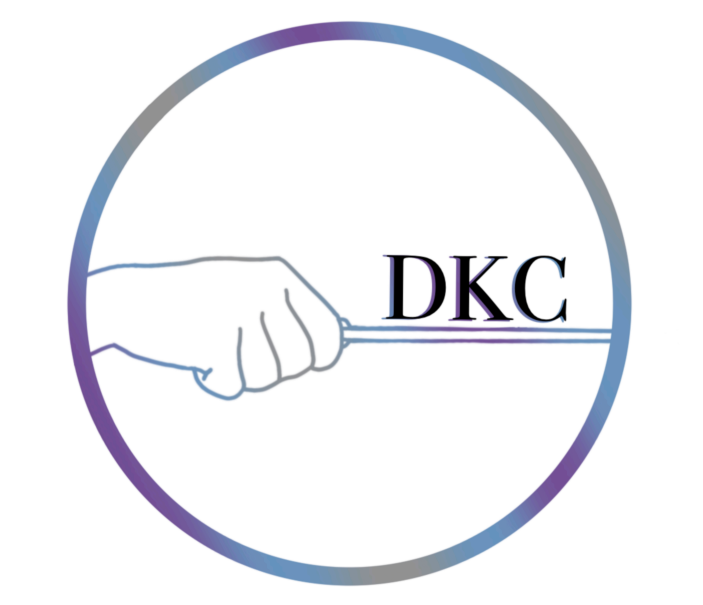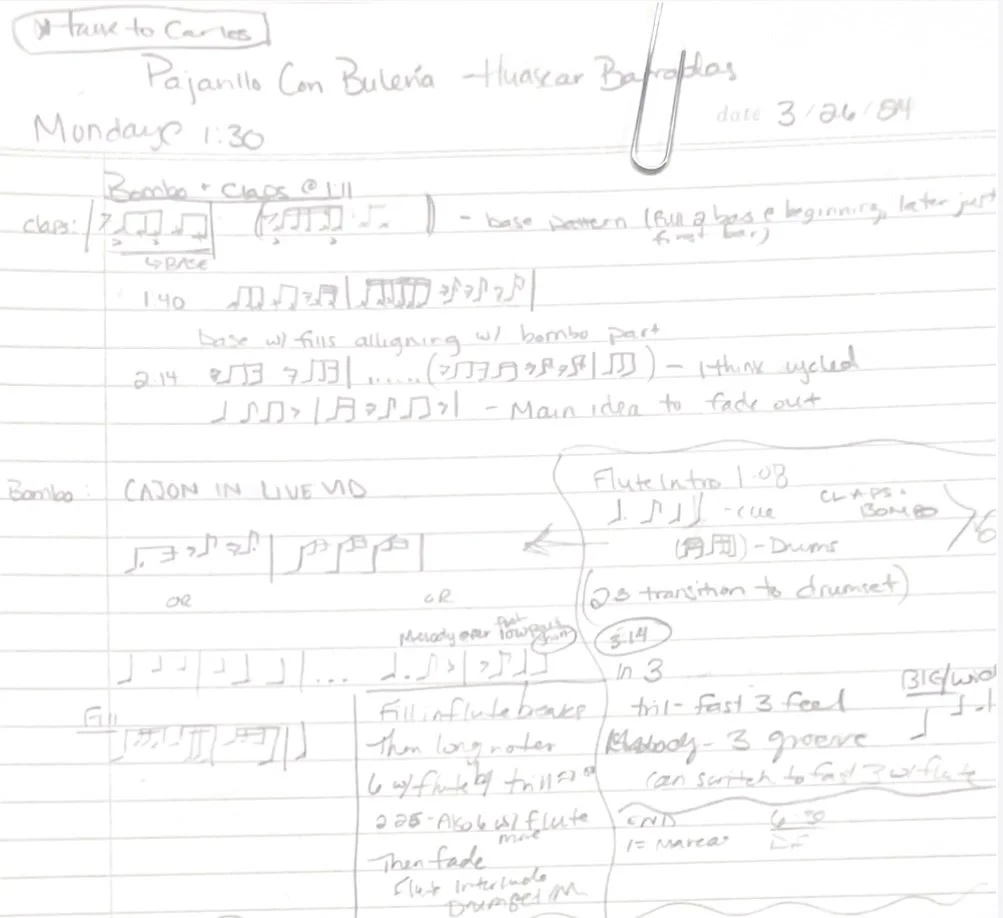Transcription Project - Post #8
Project Overview:
Over the last ten weeks, I have set and accomplished the goal of transcribing and performing Huascar Barradas’ Pajarillo con Bulería for flute and percussion. I first heard the work as part of a flute pedagogy class during my studies at the University of Arizona and I knew that I wanted to program it for my recital. However, as I pursued a written score from which I could play, I found that no such score existed. Barradas, with an incredible career’s worth of training and playing in different styles, constructed Pajarillo as a series of themes with a lot of room for improvisation. I chose not to let this stop me from performing it and got to work writing it down.
The Process:
While I have done arrangements by ear in the past, nothing has come close to how challenging this was. Huascar’s playing is brilliantly virtuosic, with the characteristic rhythmic complexity of the Venezuelan folk music from which he is inspired. Familiarizing myself with this style, his modal and melodic tendencies, and the physical act of writing it all down was a mountain of effort. This alone took the first five weeks.
Two notational methods that I created to assist in the overlap between what I wanted to play and what was legible to write are percussive notation and modal-run notation. These use markings that, while not traditional in notation for flute, functioned as guidelines for the reproduction of Barradas’ original ideas.
The left is my style of notation for the extended technique of producing a percussive pitch with a forceful articulation that does not create typical flute tone.
The right is a set of rhythmically ambiguous passages that move through the indicated mode. The top excerpt utilizes the A Harmonic Minor note collection with the turnaround points of d, e, and f in different octaves. The bottom starts with a similar note collection but shifts to a descending whole-tone scale, a nod to Barradas’ extensive classical training. The lines allow the pacing of these runs to fit my ability and musical decision, rather than a precise unit of subdivision.
Expanding the Work - Inviting Collaboration
I knew that the full scale of Barradas’ initial work, which calls for two percussionists, flute, bass, keyboard, and cuatro (a string instrument in the guitar family), would be impractical for my performance. However, I could never have captured the essence of the piece that initially drew me in without at least expanding beyond solo flute. This led me to reach out to Katelynn Ward, a percussionist with a background in Latin American music, who met my request with an incredible passion and enthusiasm.
For four weeks, Katelynn and I worked together to iron out our shared interpretation of the score, develop a realistic but authentic assortment of percussion instruments for her to play in the performance, and overall have fun playing something with so much to offer. For both of us, it was a new experience to have a performance goal that was not clearly defined and to tread the simultaneous path of reproducing ideas and creating original ideas. I learned a lot about my playing in the way I received hers, and it was wonderful to be exposed to her wealth of knowledge and expertise.
This image is a scan of Katelynn’s notes. She used both a live and studio recording of Pajarillo to deconstruct and replicate the percussionists’ approach. She then assigned each section an instrumentation based on what we had access to and played from a combination of these notes and my score. Her ability to synthesize all of this information and still keep the performance engaging and within her unique style is an incredible display of her skill and I was honored to work with her on this project.
Finally, we put on the performance as part of my Third Year Undergraduate Recital on April 14, 2024. It was a terrific experience for us and the audience and I felt immense pride to bring that work which I admired so much to new ears.
Reflection:
The following is a video I created that highlights the information of this post on the backdrop of the performance itself. I have lined up a few pieces of media, from my transcription process and score to rehearsal moments, with their occurrences on stage to show the way that my vision of the final product guided each step. It concludes with the sentiment: We wanted to allow ourselves to have fun with our creative ideas and, suffice to say, we succeeded.


